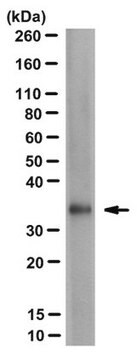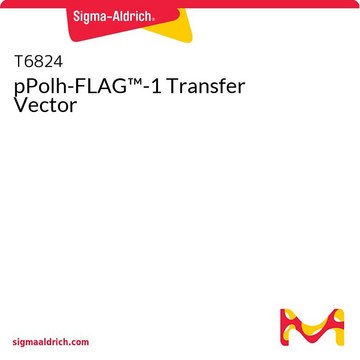MABN2280
Anti-FMR1polyG Antibody, clone 8FM-2F7
ascites fluid, clone 8FM-2F7, from mouse
Sinónimos:
Synaptic functional regulator FMR1, Fragile X mental retardation protein 1, FMRP, Protein FMR-1
About This Item
Productos recomendados
biological source
mouse
antibody form
ascites fluid
antibody product type
primary antibodies
clone
8FM-2F7, monoclonal
species reactivity
human
packaging
antibody small pack of 25 μL
technique(s)
immunofluorescence: suitable
immunohistochemistry: suitable (paraffin)
western blot: suitable
isotype
IgG1κ
NCBI accession no.
UniProt accession no.
target post-translational modification
unmodified
Gene Information
human ... FMR1(2332)
General description
Specificity
Immunogen
Application
Neuroscience
Immunohistochemistry Analysis: A representative lot detected FMR1polyG in Immunohistochemistry applications (Buijsen, R.A., et. al. (2014). Acta Neuropathol Commun. 2:162; Sellier, C., et. al. (2017). Neuron. 93(2):331-347).
Western Blotting Analysis: A representative lot detected FMR1polyG in Western Blotting applications (Sellier, C., et. al. (2017). Neuron. 93(2):331-347).
Immunohistochemistry Analysis: A 1:50 dilution from a representative lot detected FMR1polyG in human cerebral cortex and human testis tissues.
Immunofluorescence Analysis: A representative lot detected FMR1polyG in Immunofluorescence applications (Buijsen, R.A., et. al. (2014). Acta Neuropathol Commun. 2:162; Sellier, C., et. al. (2017). Neuron. 93(2):331-347).
Quality
Western Blotting Analysis: A 1:500 dilution of this antibody detected FMR1polyG in HEK293 cell lysates expressing FMR1polyG.
Target description
Physical form
Storage and Stability
Other Notes
Disclaimer
¿No encuentra el producto adecuado?
Pruebe nuestro Herramienta de selección de productos.
Certificados de análisis (COA)
Busque Certificados de análisis (COA) introduciendo el número de lote del producto. Los números de lote se encuentran en la etiqueta del producto después de las palabras «Lot» o «Batch»
¿Ya tiene este producto?
Encuentre la documentación para los productos que ha comprado recientemente en la Biblioteca de documentos.
Nuestro equipo de científicos tiene experiencia en todas las áreas de investigación: Ciencias de la vida, Ciencia de los materiales, Síntesis química, Cromatografía, Analítica y muchas otras.
Póngase en contacto con el Servicio técnico








